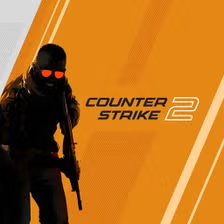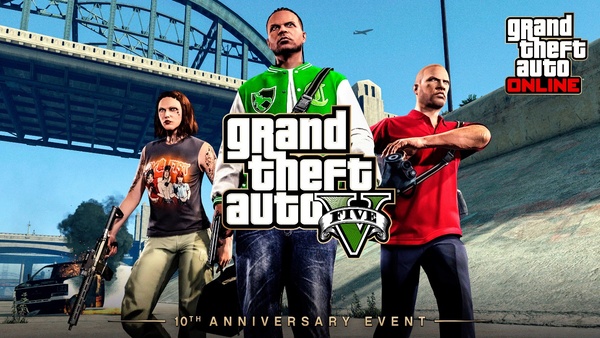Rainbow Six Siege – Mastering Tactical Destruction in Modern FPS Gaming
Introduction
Rainbow Six Siege is not just another first-person shooter—it's a thinking player’s game where every second counts, every wall is a potential entry, and teamwork is the cornerstone of survival. Developed by Ubisoft Montreal and first released in December 2015, Rainbow Six Siege has evolved into one of the most respected tactical shooters in the esports world. Its unique combination of destructible environments, operator abilities, and strategic team play sets it apart from the fast-paced, run-and-gun formula of most shooters. Designed around intense 5v5 encounters between attackers and defenders, the game encourages planning, coordination, and flawless execution. In this article, we will explore everything from gameplay mechanics and operator systems to map design, esports growth, and whether Siege is still worth playing in 2025.
The Evolution of Rainbow Six Siege Since Launch
Rainbow Six Siege began as an underdog and has transformed into a global competitive phenomenon.
A Rocky but Ambitious Start of Rainbow Six Siege
At launch, Siege lacked a traditional single-player campaign and faced criticism for its small content pool and connectivity issues. However, Ubisoft’s commitment to ongoing support, frequent updates, and community engagement turned early skepticism into a long-term success story.
The Road to a Tactical FPS Icon
Through multiple Year-based content seasons, Siege grew from 20 Operators and 10 maps to over 65 Operators and more than 20 maps. The game embraced player feedback, rebalanced gameplay, and refined mechanics to become one of the deepest FPS titles available.
Core Gameplay Mechanics in Rainbow Six Siege
The gameplay of Rainbow Six Siege hinges on strategic planning, operator selection, and team coordination.
Attack vs. Defense Dynamics Rainbow Six Siege
Matches are round-based, with teams alternating between attacking and defending. Attackers must breach objectives, while defenders reinforce walls, set traps, and hold positions. The tactical asymmetry leads to a wide variety of gameplay scenarios.
Destruction as Strategy
One of Siege’s hallmark features is its destructible environments. Players can shoot through walls, create new lines of sight, and breach floors or ceilings. This encourages creative strategies and constantly evolving map knowledge.
The Operator System: Roles and Abilities in Siege
Operators are the heart of Siege’s tactical depth, each offering unique tools and strategic advantages.
Attacking Operators
Attackers like Thermite and Ash are equipped with breaching tools, drones, and explosives. Their role is to gather intel, break through defenses, and eliminate defenders without triggering traps or ambushes.
Defending Operators
Defenders such as Smoke, Jäger, and Mira specialize in area denial, surveillance, and fortification. Their gadgets create chokepoints, gather information, or protect high-value targets like the bomb or hostage.
Roles and Loadouts
Operators are categorized into support, entry, anchor, roamer, or flex roles. Choosing the right operator and role based on map and strategy is essential for success.
Strategic Map Design and Environmental Interactivity
Every map in Rainbow Six Siege is a puzzle that rewards spatial awareness and environmental control.
Maps With Purposeful Layouts
Maps like Bank, Clubhouse, and Oregon are designed with verticality, destructible surfaces, and multiple entry points. Understanding callouts, camera placements, and common angles is crucial for competitive play.
Environmental Tools and Utilities
In addition to destructible elements, players use tools like barricades, hatches, reinforcements, and bulletproof gadgets to shape their surroundings. Sound plays a major role too—footsteps, explosions, and breaching cues can signal an enemy’s location.
The Learning Curve and Skill Ceiling in Siege
Rainbow Six Siege is known for its steep learning curve but also for rewarding player mastery.
Complexity That Encourages Growth
New players often face a tough onboarding experience, as Siege lacks the simplicity of more casual shooters. However, once core mechanics are understood, the depth of strategy, map rotation, and operator synergy becomes incredibly rewarding.
Ranked, Casual, and Custom Matches
Ranked mode uses MMR-based matchmaking, while Casual allows for more relaxed experimentation. Custom games let players practice or compete with tailored settings, offering flexibility for all skill levels.
Competitive Scene and Esports in Rainbow Six Siege
Siege boasts one of the most strategic and respected esports scenes in the tactical shooter genre.
Pro Leagues and Majors
Rainbow Six Siege has hosted international tournaments such as the Six Invitational, Six Major, and regional leagues (NAL, EUL, APAC). These events feature the world’s top teams and push the meta forward with each competition.
Community Tournaments and Content Creators
Beyond the official pro circuit, countless amateur leagues and content creators fuel the game’s community. Influencers on Twitch and YouTube help educate new players and showcase elite-level gameplay.
Regular Updates, Seasons, and Operator Releases
Ubisoft maintains a seasonal content model, bringing new operators, map reworks, and balance changes.
Year-Based Roadmaps
Each year introduces four seasons, each containing new operators, events, and patches. Roadmaps give players a sense of what’s coming and allow the developers to align content with feedback.
Events and Temporary Modes
Limited-time events such as Doktor’s Curse or Rainbow is Magic add fun, non-traditional gameplay while keeping the community engaged between major content drops.
Accessibility and Performance Optimization
Siege has made strides in making the game more accessible and optimized for modern hardware.
UI, HUD, and Settings Improvements
Custom HUD elements, simplified pings, and improved gadget indicators help reduce the barrier for new players. Colorblind support, voice commands, and better training options have also been introduced.
Console and PC Optimization
Siege runs smoothly on PC, Xbox Series X|S, and PlayStation 5 with 120 FPS support, enhanced resolution, and quicker load times. Crossplay is limited to console families, but cross-progression is available via Ubisoft Connect.
Microtransactions, Battle Pass, and Monetization Strategy
Like many modern games, Rainbow Six Siege incorporates a monetization system centered on cosmetics.
Battle Pass and Skin Bundles
The seasonal Battle Pass includes premium and free tracks with skins, Renown boosts, charms, and Alpha Packs. Premium operators are still unlockable via in-game currency, avoiding pay-to-win issues.
Alpha Packs and Cosmetics
Alpha Packs are randomized loot boxes that grant cosmetic items. While controversial at launch, they now serve mostly as an aesthetic addition, not a core gameplay mechanic.
Expert Rating and Final Verdict on Rainbow Six Siege
Rainbow Six Siege stands out as one of the most intelligently designed shooters in modern gaming. It rewards patience, strategic thinking, and adaptability. While it’s not the easiest game to start, the learning journey is filled with satisfying victories and meaningful improvements. With strong support from Ubisoft and a loyal player base, Siege remains highly relevant in 2025.
Expert Rating: 9.0/10
A must-play for tactical FPS enthusiasts who value strategy, coordination, and high-level competition.
Conclusion
Rainbow Six Siege is more than just a shooter—it's a dynamic battlefield that constantly evolves with every season. Whether you’re a returning veteran or a curious newcomer, Siege offers unmatched depth in the FPS genre. Its blend of destructible environments, operator synergy, and high-stakes gameplay makes every match a unique mental challenge. Though demanding, the rewards are immense for those willing to invest the time. As it enters its 10th year with sustained popularity and innovation, Rainbow Six Siege continues to be a defining force in tactical multiplayer gaming.































